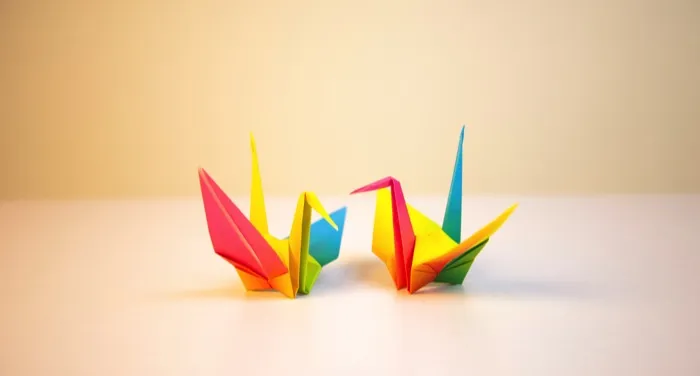
11 of the Best Stories Featuring Origami
Origami in Books. NOT Origami Books. These are the books for inspiration with origami in our lives. Origami is a beautiful craft and perfect for some meditative peace during lockdowns and life-in-general. So is reading. Sometimes we aren’t quite in the mental space to create our own paper artwork. Sometimes, the same serenity is gained from reading about someone else using their skills.
I love origami. In everything else, I am a chaotic hot mess, bubbling with ideas but no follow-through (please do not look at my TBR pile). Yet, when I slide out a piece of Japanese paper and apply my thumbnail to some clean crease-folds, I gain a sense of calm and control over my life. There is a sweet challenge in bending the paper to my will to create something lovely. And the bonus of adding sweet messages to the art…Well, I enjoy reading about that too.
There are plenty of books and videos online with instructions for absolutely stunning origami. You can use any paper you like and make any creative additions that come to you. But if you are looking for stories with origami at the heart — origami in books — you will be blown away by the creativity in my choice for 11 of the Best Stories: Origami in Books.
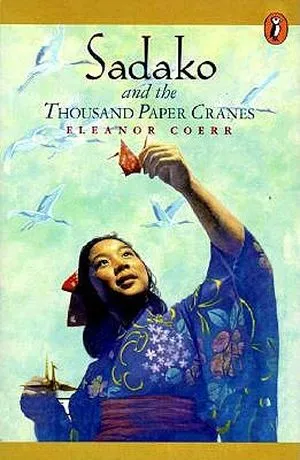
Sadako Sasaki and the Thousand Paper Cranes by Eleanor Coerr
The first book many people think of when we say ‘origami in books’ is Sadako Sasaki and the Thousand Paper Cranes by Eleanor Coerr. This book was provided to schools all around the world as a children’s historical novel. The 1977 novel is based on the life of Sadako Sasaki, a young girl who contracted Leukaemia from the radiation following the Hiroshima bombing in World War II. As the novel goes, Sadako was told of a Japanese legend where if you fold a thousand origami cranes, the gods will grant you a wish. According to Coerr’s retelling, Sadako was only able to fold 664 before she died from her illness. Her friends and family continued the folding to 1000 and then donated it to a memorial with the wish for no one to suffer like Sadako.
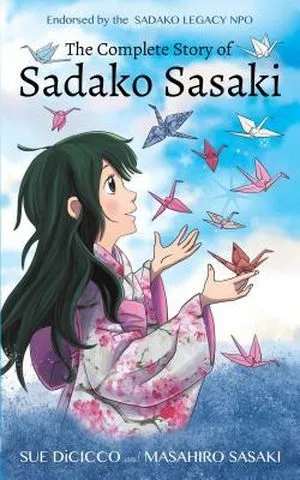
The Complete Story of Sadako Sasaki by Masahiro Sasaki and Su DiCicco
Sadako’s incomplete dream broke me as a teenager. I remember spending an entire summer folding origami cranes in her honour. Plot Twist: Sadako did achieve her 1000 cranes (plus more). Sadako’s brother has published a subsequent novel, The Complete Story of Sadako Sasaki, together with co-writer Sue DiCicco. Masahiro Sasaki has shared greater details about Sadako’s life and the subsequent work from family to promote peace around the world. Many of the origami cranes were donated to memorials, museums, and schools all around the world. While Sadako’s wish for peace has been lifted up by many, Sadako was unable to escape the complications of her disease. The message of the original novel by Coerr is beautiful and inspiring but the realism of Sasaki and DiCicco’s book is even more powerful. You will never look at an origami crane the same way again.
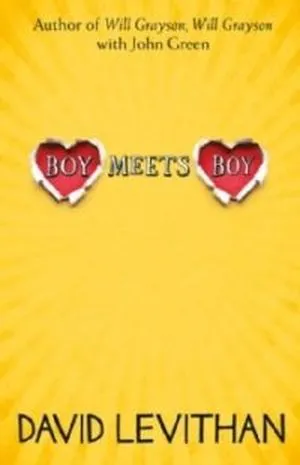
Boy Meets Boy by David Levithan
A popular favourite amongst the Book Riot crew. It is the typical romantic trope of high school love with one significant difference: it is set in a gay-friendly small town with a pro-LGBTQI school and active community. Levithan wrote this book after hearing about his best friend’s friend, growing up in a very conservative household in Midwest USA. Boy Meets Boy is the ultimate happy YA romance novel; it’s quirky, it’s adorable, and the main character Paul spends a whole night making origami flowers to decorate the hall and locker of his love. That puts the awwww in origami.
If you love this book as much as we do, check out our Reading Pathways: David Levithan here.
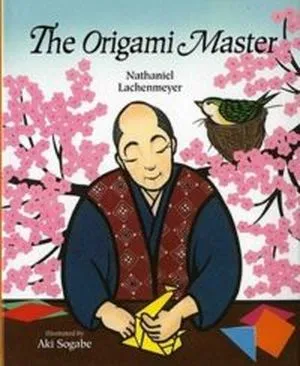
The Origami Master by Nathaniel Lachenmeyer and Aki Sogabe
Origami can be a great lesson in humility, as shown in the children’s book The Origami Master, written by Nathaniel Lachenmeyer and illustrated by Aki Sogabe. I say illustrated but a more appropriate word is created. Sogabe is well-known for her gorgeous paper-cut artwork (you can see more of it here). Her simple yet elegant artwork is perfectly matched to the nature of origami and the life-lesson told in the story. Shima, the origami master, lives on a mountain and practices origami every day. One morning, he finds an origami elephant on his desk — even more skillful than his own. This continues for a few days until Shima captures the ‘new master’ and demands to learn its secrets. Thus comes the lesson in humility; as with origami, if you force something that is not meant to be, you are more likely to tear it apart.
“Ghostweight” by Yoon Ha Lee
A science fiction novelette with origami in both the story and the soul. Lisse, the main character, steals a war spaceship to avenge her homeworld, ruined by battle and destruction. Lisse is not alone; she is accompanied (and guided) buy ghosts of her ancestors. Ghosts who share stories, experiences, and advice. It is a skill shared by her people and called “ghost weight”.
“It is not true that the dead cannot be folded. Square becomes kite becomes swan; history becomes rumor becomes song. Even the act of remembrance creases the truth.”
Ghostweight by Yoon Ha Lee
This story has a beautiful blend of basic origami concepts with sci-fi creativity. My favourite is the weaponry jerengjen, as it unfolds from flat shapes into artillery with dragon-shaped shadows. It also folds into wolf-shaped robots or kestrel-shaped bombers. You can read it yourself on the Clarkesworld website here.

Fold Me a Poem by Kristine O’Connell George and Lauren Stringer
I love this book for its balance of poetry, artwork, and creativity with origami. Fold Me a Poem contains 30 poems for children, ranging from narrative to free-verse and haiku. Each of them centres on the imagination of a young boy as he creates a world filled with origami creatures. The illustrations are a wonderful compliment to both the poetry and the evolving nature of a child’s imagination. Perfect to share in bites-sizes as an introduction to origami (children and adults alike).
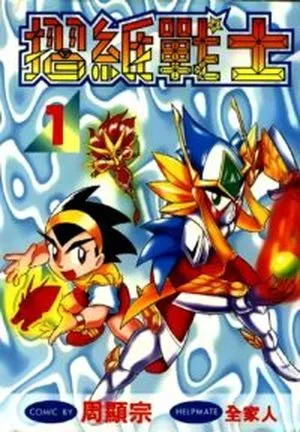
Origami Warriors created by Jhou Sian Zong
The story begins with three children who discover some paper with a book showing how to fold the paper into different shapes. The paper is in fact an ancient but technologically advanced device that can be folded into a Genie. The main characters soon learn they can work with the Genies and become superheroes known as Origami Warriors! The comic style is very cutesy but I love the range of powers dependent on what they are folding. The Origami Fighter Species include Dragon, Flower, and Crane. This Taiwanese comic book series is also known as Origami Fighters and was followed by Origami Fighter Generation, Origami Fighter W, and Origami Fighter X. I have only read the first series but would love to hear from anyone who has read the others.
“Origami” by Troy Onyango
Many authors are publishing their novelettes and short stories online, and they can be an absolute treat when you find them. The Johannesburg Review of Books has a great collection of stories, which is where I found Origami by Troy Onyango. It’s a short story from 2019 and is so beautiful in the way he describes the emotional experience of the main character as they navigate all of the relationships around him.
“He has fallen in love in the way people make paper into origami—slowly, beautifully, with hands full of paper cuts.”
Origami by Troy Onyango
Troy Onyango also features in The Short Story is Dead, Long Live the Short Story! Vol.4, a short story anthology of 11 stories by African writers. The collection of writers were from the longlist in the 2018 Black Letter Media annual short story competition, including Nebila Abdulmelik, Carey Baraka, Tariro Ndoro and Themesha Khan.
“Origami of the Heart” by M Pepper Langlinais
Another online short story, this time set in Tokyo and featuring the awkward but sweet interaction between two male characters: Dane and Nolan. It is a lovely comparative between origami and the foldable nature of ourselves when we interact with people we don’t know; bending this way and that while we look under their folds to learn more about them. You can find Origami of the Heart on the East of the Web Short Stories site here.
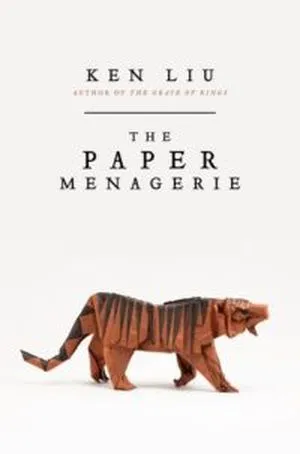
The Paper Menagerie by Ken Liu
This magical story won the Hugo, the Nebula, and the World Fantasy Award — the first story to ever win all three, and it deserves every accolade to go with it. It is a story of family, love and loss, and a bit of magic connecting us. At the heart of it is the traditional skill of zhezi, the Chinese equivalent of origami. Jack’s mother used to make zhezi animals for him, breathing life into them to create playmates. For his mother, this is a part of her Chinese ancestry she wishes to share with him. Unfortunately, as Jack grows he loses interest in zhezi…and his mother. The story is heartbreaking but it is so powerful in its symbolism and sensitivity. It is a beautiful insight into the fragility of family secrets, much like the light paper we use in origami and zhezi.
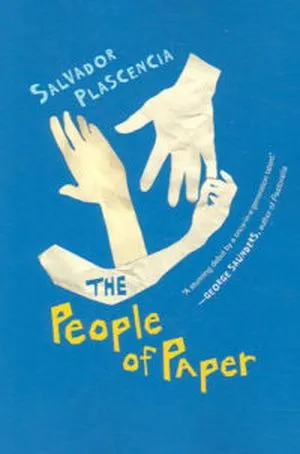
The People of Paper by Salvador Plascencia
This is the last of my suggestions because I am honestly of two minds about it. On one hand, The People of Paper is an exploratory novel, depicting the painful struggles of life and writing through a fantastical world built with paper and imagination. On the other hand, it is stylistic and personal, which in itself can also be a good thing but runs the risk of not sitting well with some readers. For example, the pain of being abandoned by a woman leaves a rather misogynistic taste in Chapter 12 that almost spoiled the vibe of the whole book for me. However, I do think the rest of the novel deserves a mention in this article because the creative genius warrants at least a glance as to how our own lives can be both flimsy and also strong, just like paper. One of the characters is an Origami Surgeon who transplants organs with origami versions of the same. If you have ever felt like reverse-folding yourself to accommodate another, you will empathise with the stress we can place on even the strongest of paper. The People of Paper was mentioned by fellow Book Rioter Vanessa Diaz in her “Riot Recommendation: 60 of Your Favorite Strange and Compelling Books!”
Origami is a lot like your favourite book, folding and unfolding with the story as characters reveal themselves across the paper. It is such a beautiful artform, I expected to see it used more often in creative writing. If I have missed any here, please let us know in the social media chats!











